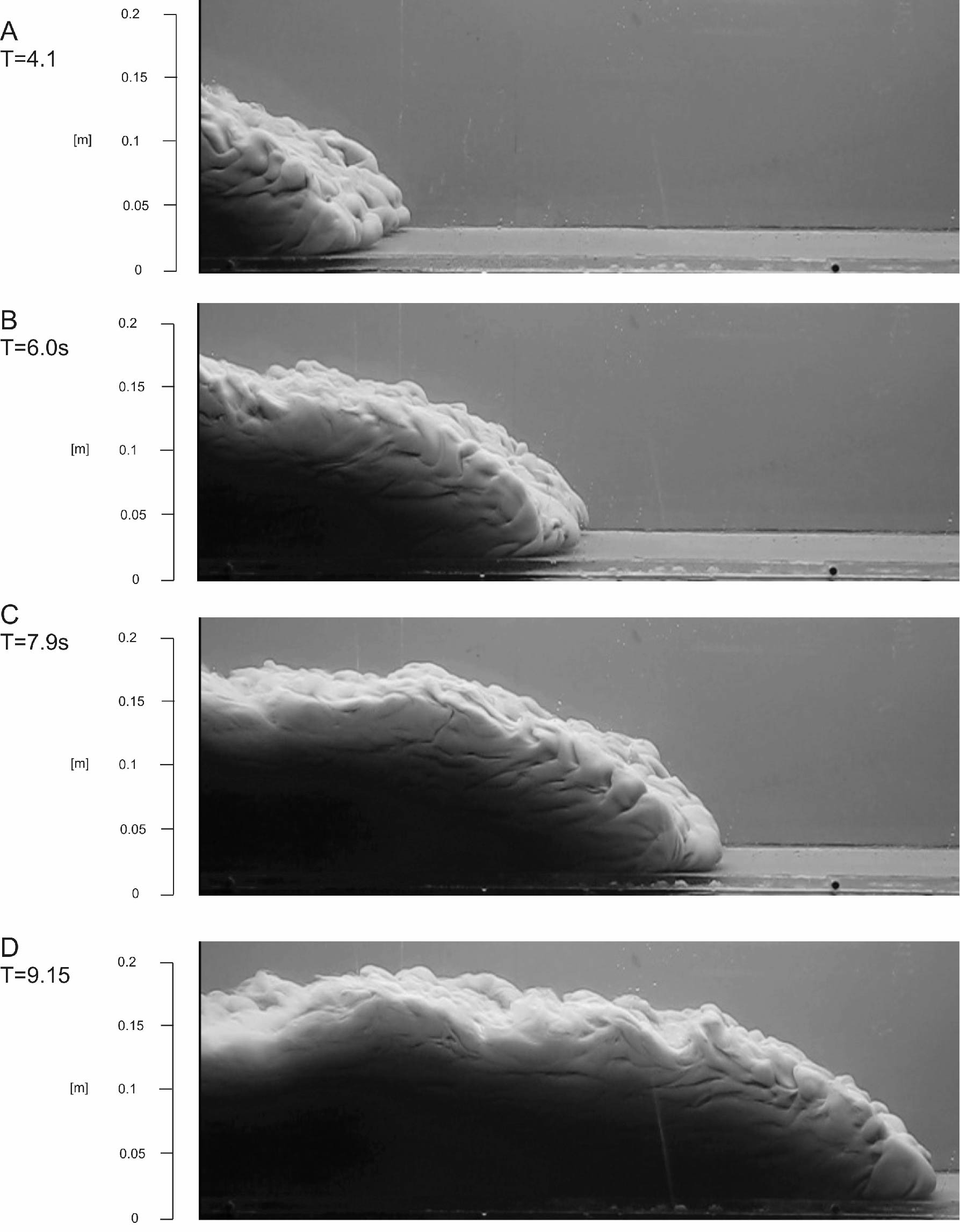Lab
We use laboratory experiments to understand the basic physics of environmental flows. These experiments complement field work by offering a controlled environment where repeatable observations can be made of mixing and dispersion in stratified and rotating flows. Movies of some lab experiments are online at this YouTube channel.
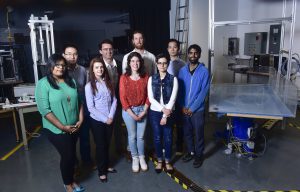
Here are links to some recent laboratory movies
- Large rotating flume in Grenoble used to studies Coriolis effects in gravity currents.
- Convection from sediments in gravity currents.
- Sediment laden intrusions
- A simple set up to explore internal waves at home or at a party.
- Coriolis effects using a DJ turntable
- A collection of classic older double diffusive convection videos, from collection of Prof. J.S.Turner.
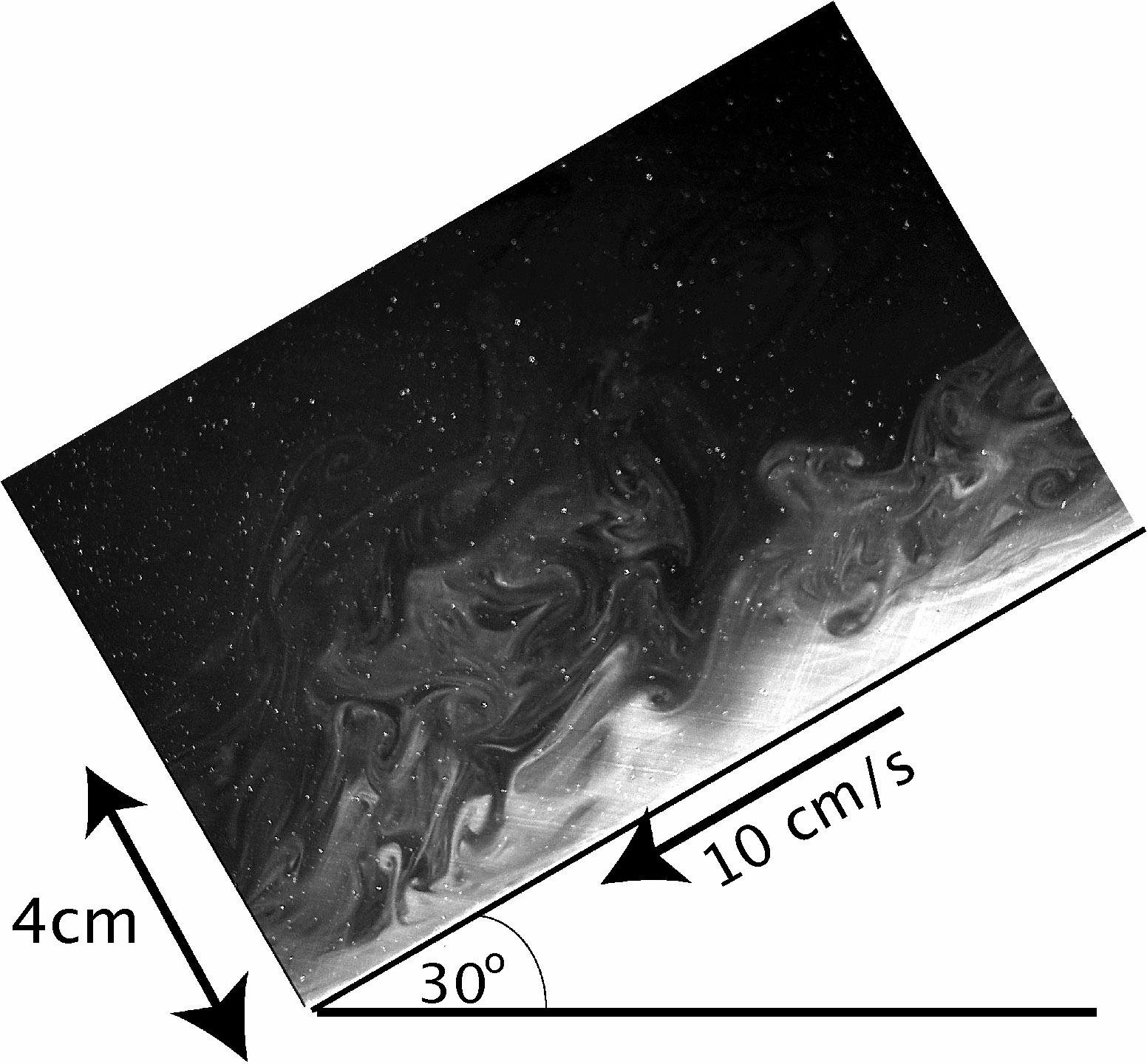 The image on the left shows an entraining density current flowing down a steep slope into a confined basin.
The image on the left shows an entraining density current flowing down a steep slope into a confined basin.
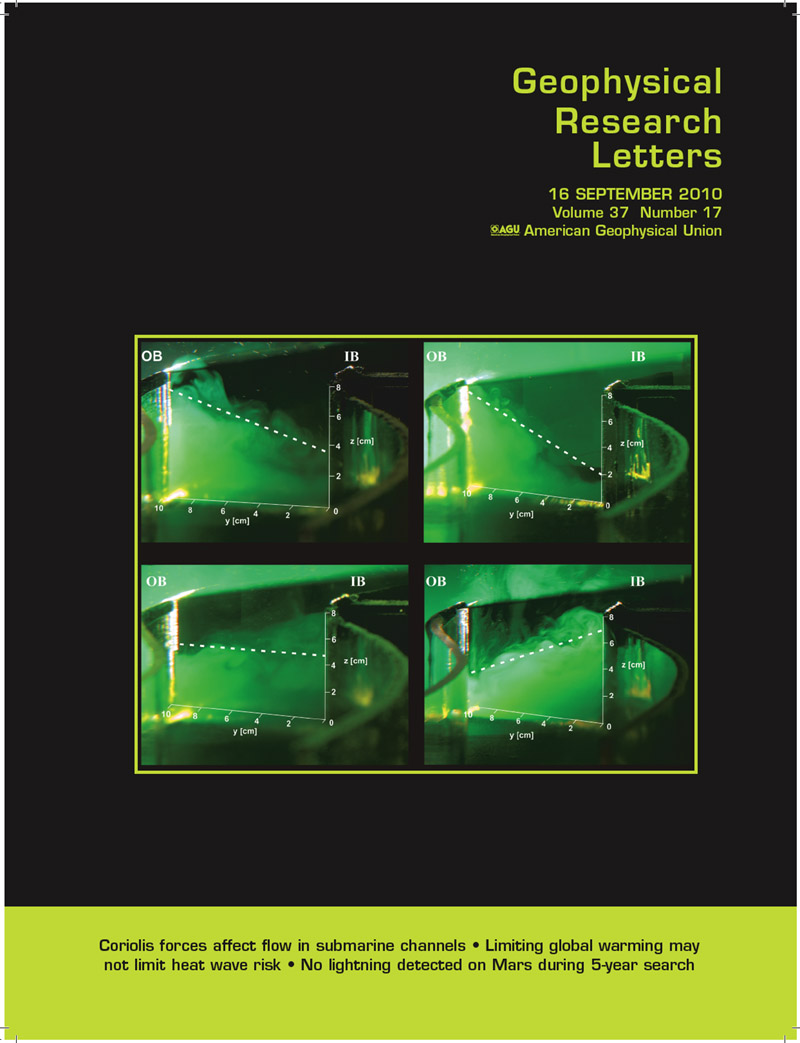 This image shows how Coriolis forces deflect a density current flowing through a curved channel. Read the article at http://www.agu.org/journals/gl/gl1017/2010GL044296/
This image shows how Coriolis forces deflect a density current flowing through a curved channel. Read the article at http://www.agu.org/journals/gl/gl1017/2010GL044296/
Our rotating platform is based on a design generously provided by Karl Helrich of WHOI. It was built by the U of T Physics Department machine shop. using funds provided by the Canadian Foundation of Innovation and the Ontario Research Fund. This tablThis facility will be used to make analogue models of the influence of Corilois forces on large scale flows.
The image on the right shows how Coriolis forces deflect the interface of a density current as it flows down a channel. In a) the rotation is in the Northern hemisphere sense. in b) there is no rotation so f = 0 as at the equator, and in c) the flow is deflected in the southern hemisphere sense. The images are from the article
Cossu, R., M.G. Wells. and A.K. Wahlin (2010) Influence of the Coriolis force on the velocity structure of gravity currents in straight submarine channel systems. Journal of Geophysical Research- Oceans doi:10.1029/2010JC006208
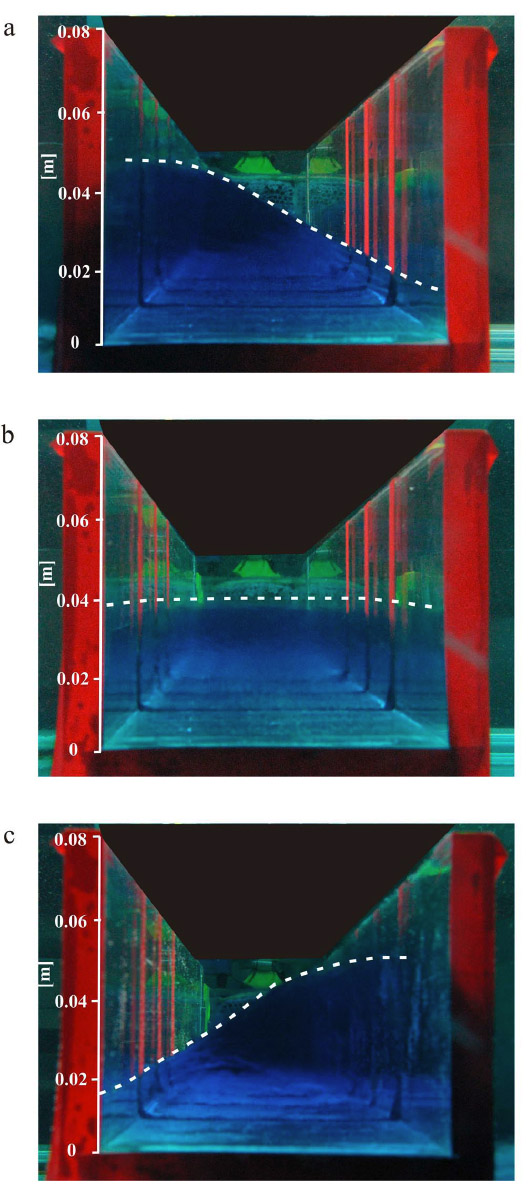
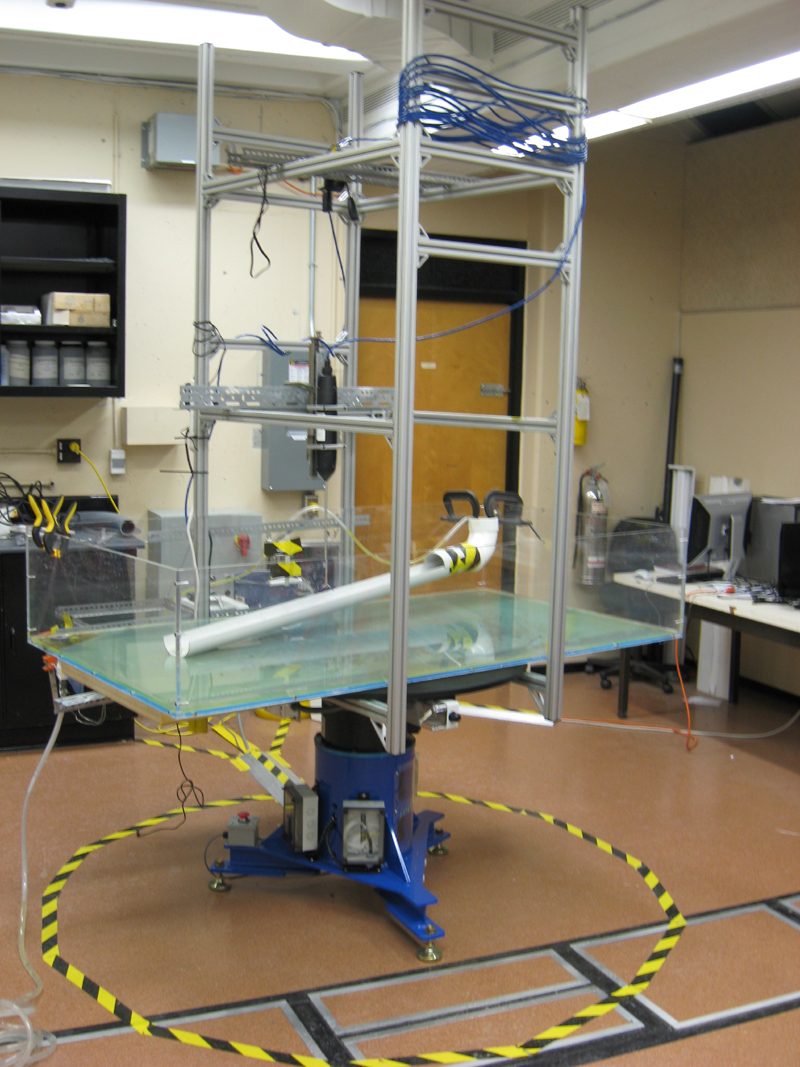
The mixing of passive tracers, such as nutrients or plankton in the ocean in often controlled by large scale eddies. I have used laboratory experiments to study such “two dimensional turbulence”.
Two images from laboratory experiments are shown below. Click here to download a movie of the laboratory experiments and here to download a movie of the numerical experiments, from our recent paper.
– M.G. Wells, H.J.H. Clercx, and G.J.F. van Heijst (2007) Vortices in oscillating spin-up. J. Fluid Mech. 573, 339 – 369
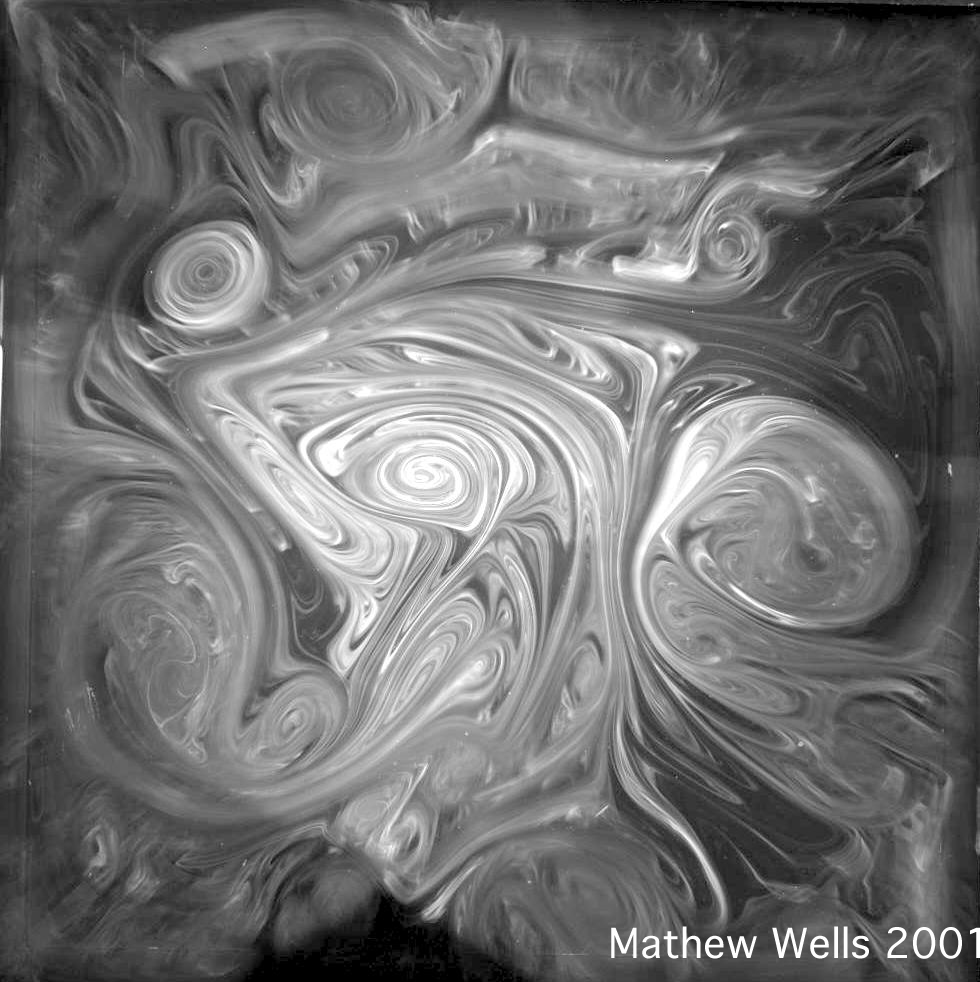
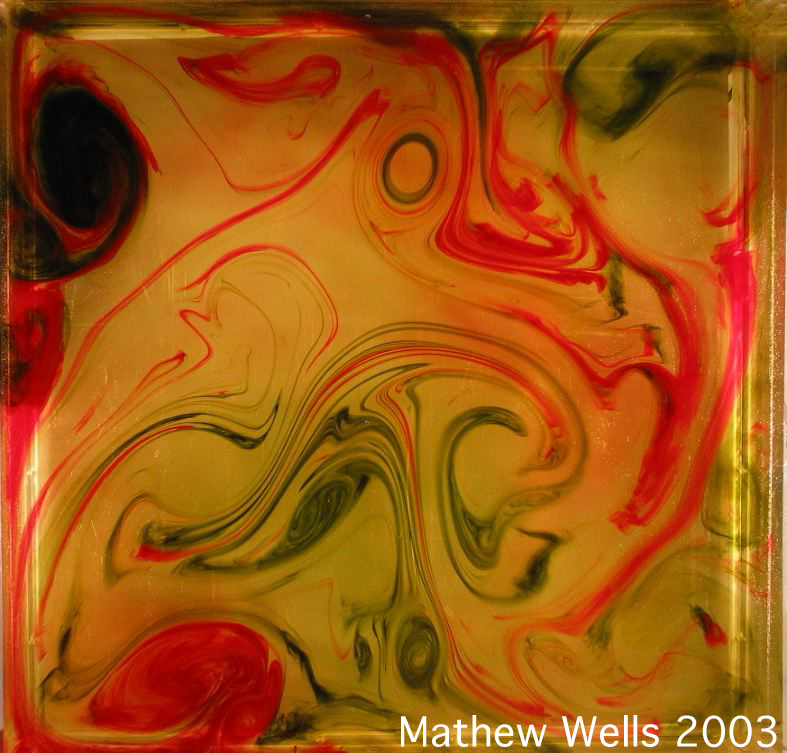
Below is an image from our experiments of dispersion in rotating convection, that was used in our experiments on understanding the flow in the sub-glacial Lake Vostok in Antarctica.
M.G. Wells and J. S. Wettlaufer (2008). The circulation in Lake Vostok: A laboratory analogue study. Geophysical Research Letters. 35, L0350, doi:10.1029/2007GL032162

Below are images of dipole formation as a model of tidal flushing of a coastal embayment. An oscillating flow goes back and forth through a narrow gap connecting two basins and slowly flushes fluid between the two basins.
– H.J.H Clercx , G.J.F. van Heijst, D. Molenaar and M.G. Wells (2005) No slip walls as a vorticity source in 2D bounded turbulence. Dyn. Atmos. Oceans 40, 3-21.
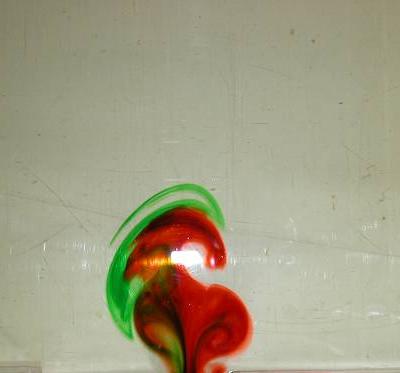
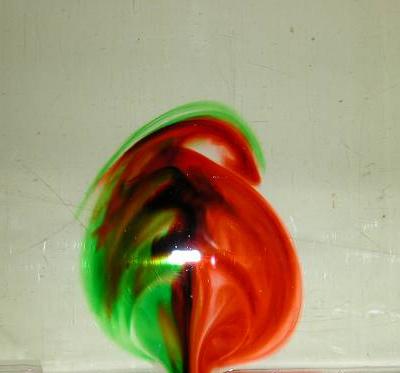
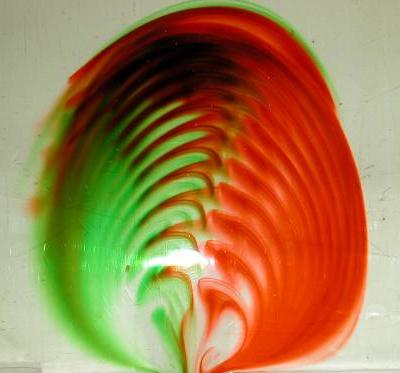
Another area of research interest is the dynamics of sediment laden flows. Below are a sequence of images taken by PhD student Remo Cossu. The images how the propagation of a turbidity current in a laboratory experiment.
